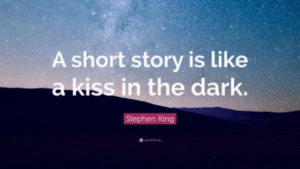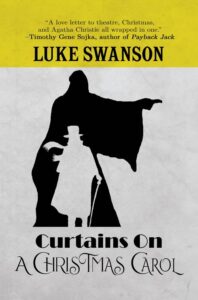The short story is a unique genre. The ability to tell a story in a few dozen pages is harder than you would think, but when they are done well, they are excellent. Good short stories can fit a novel’s worth of emotion and connection in a few thousand words. In a genre where wordiness is not tolerated, every last word must count.

The origin of the modern short story has distinctly American roots. In the 1800s, writers like Nathaniel Hawthorne and Edgar Allan Poe popularized these smaller works. By the turn of the 20th century, short stories found their home in publishing. Writers like Anton Chekhov and F. Scott Fitzgerald were renowned for their short stories. Magazines had a heyday publishing them.
Today, you would be hard-pressed to walk into a Target and find a magazine publishing short stories on the rack next to the cash register. Short stories aren’t quite as “in” are they used to be. As Stephen King recounted for the New York Times, the genre of short story is alive, but it’s not alive and well.

King wrote about short stories for the Times back in 2007, and since then, the short story has made a bit of a comeback by finding a new home on the Internet. Amazon launched Kindle Singles in 2011, which provides e-books under 30,000 words that cost less than a few dollars.
Online literary publications, some of them former print magazines, are doing their best to revive the short story genre. With the aid of the web, these sites can target audiences across the globe and publish genre-specific works in ways that print magazines have a hard time doing.
There are still some older outlets that accept short stories and prose: the New Yorker, Harper’s, and American Short Fiction among others. While it’s less prevalent than it used to be, the short story is still holding on.

December 2017 brought a surprising amount of attention to short stories. The New Yorker published a piece of short fiction by Kristen Roupenian called “Cat Person.” It tells the story of a college student named Margot as she dates an older man named Robert despite not being very attracted to him. The story went viral on social media and became The New Yorker’s second most-read article of 2017.
Much of its popularity on Twitter was because of how relatable the story was for so many women. Which, in the end, is the exact effect a short story tries to produce: creating a connection with the reader in the span of a few pages. For readers in 2017, a dating situation gone awry was relatable enough to bring the short story back into the spotlight, if only for a short amount of time.
This post is one part of a blog written for Dr. Philip Patterson’s Feature Writing class. This is a series-style blog focusing on innovations in the writing industry, so each post will discuss technology which has helped authors succeed and shape the future of the writing industry, as well as new writing markets, such as e-books and online literary journals.











Be First to Comment